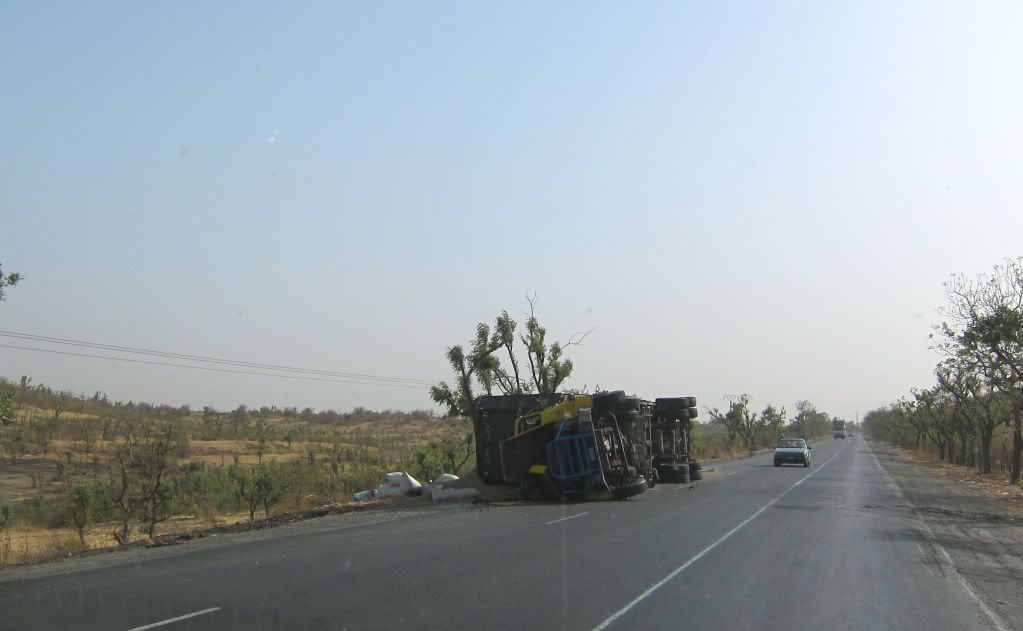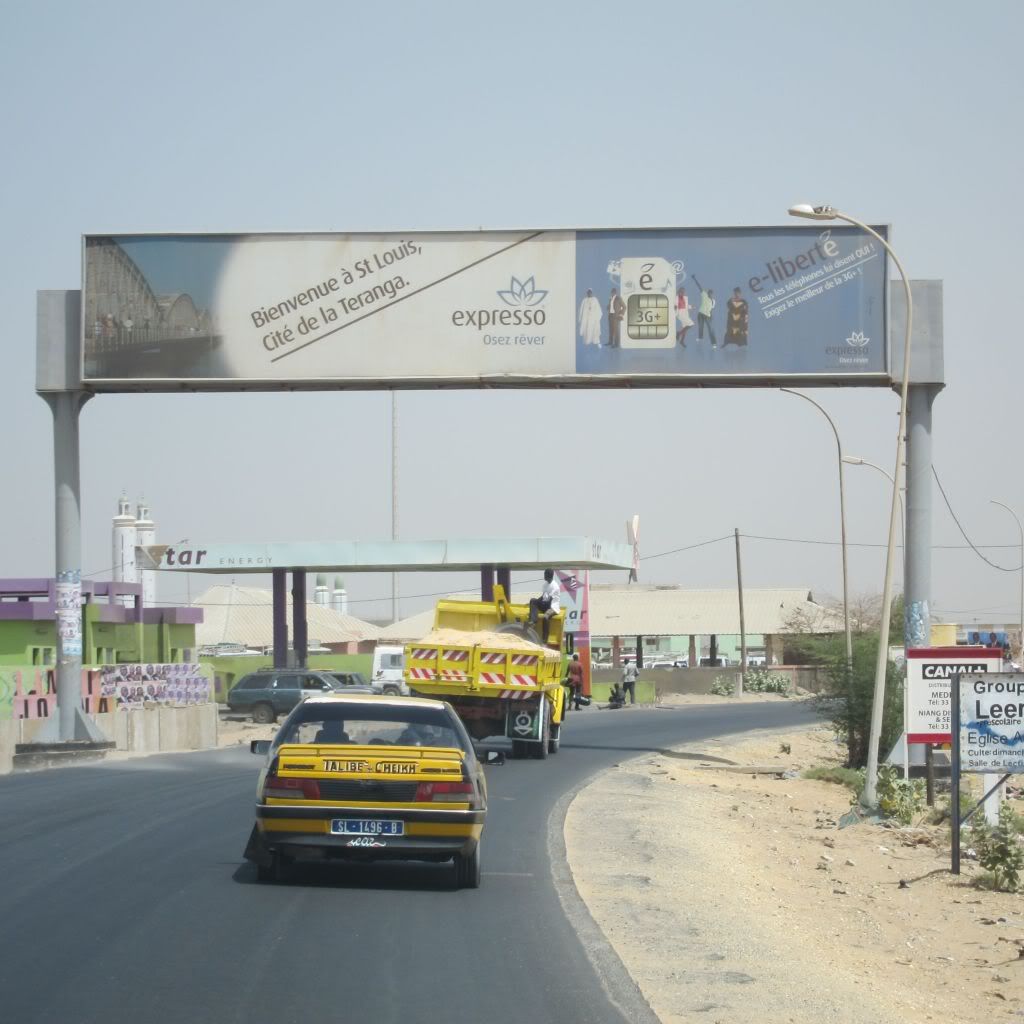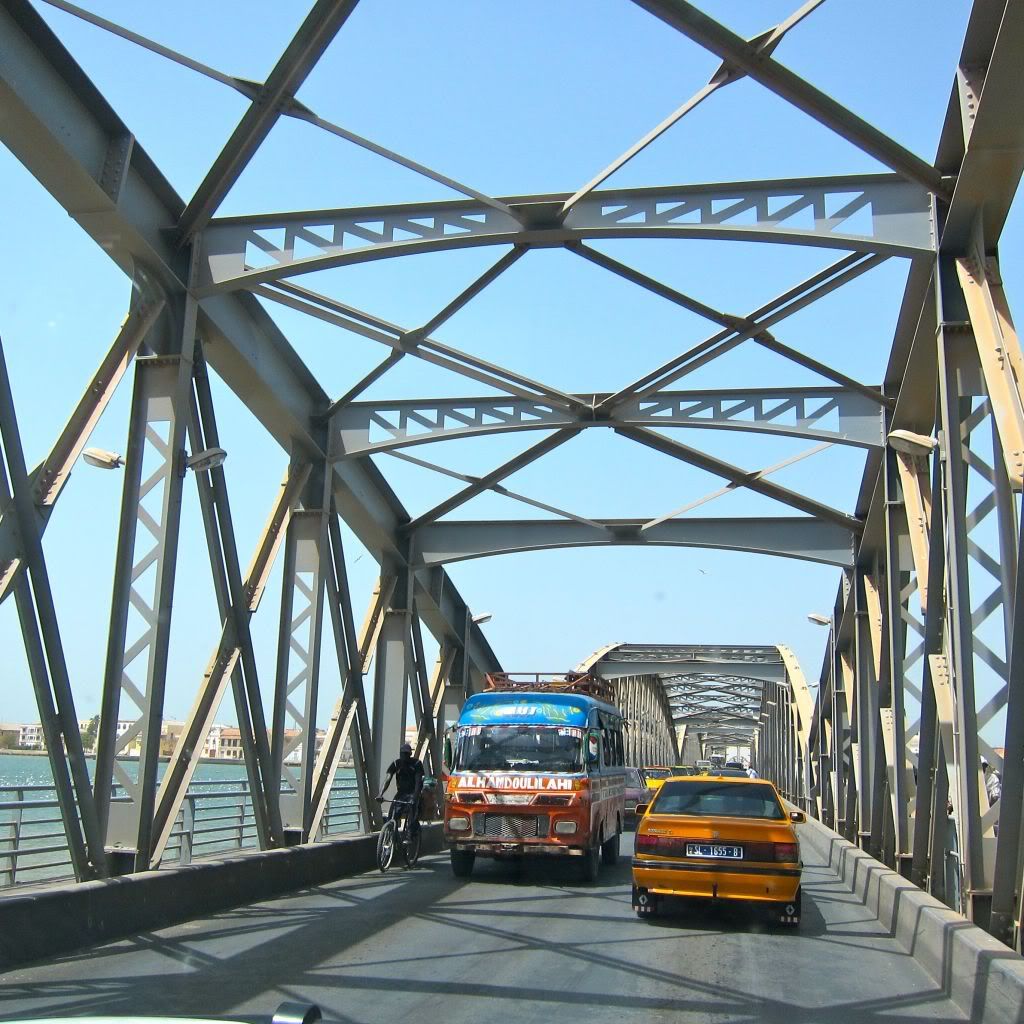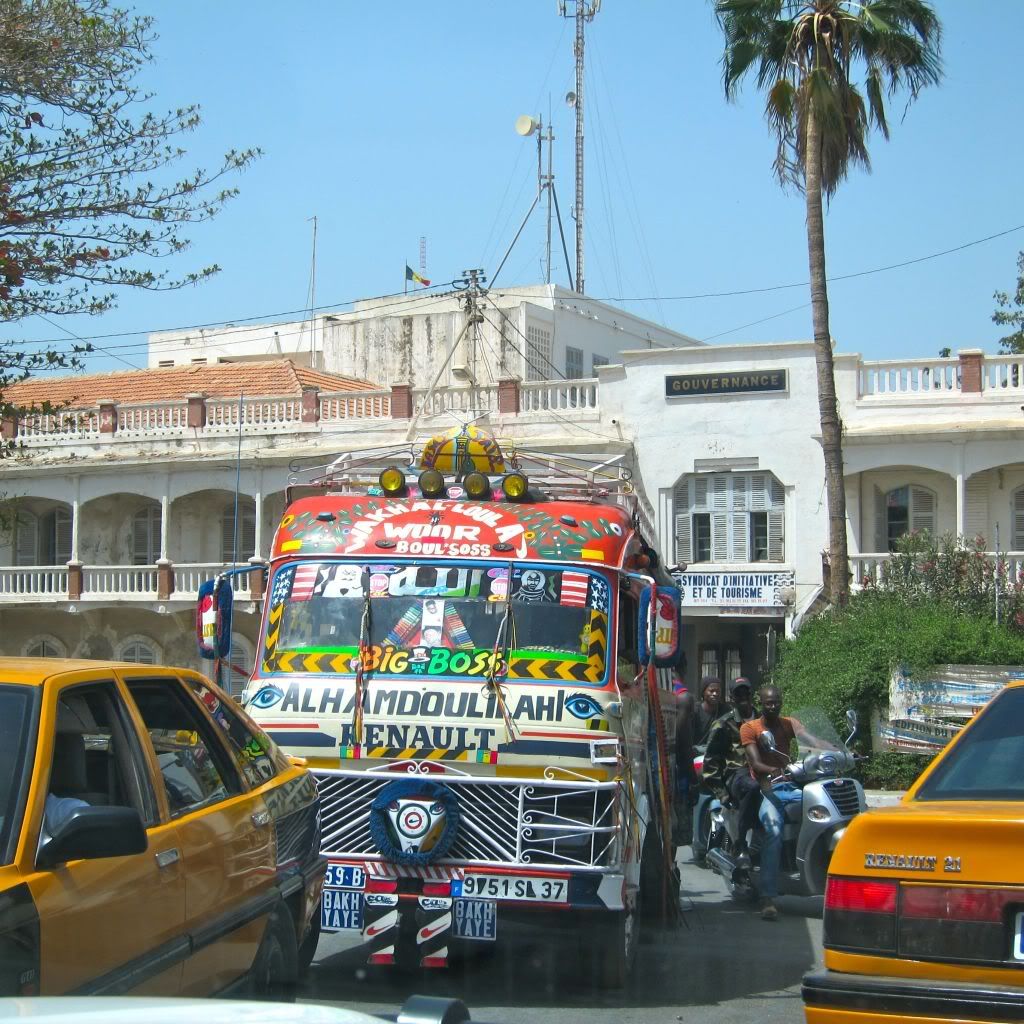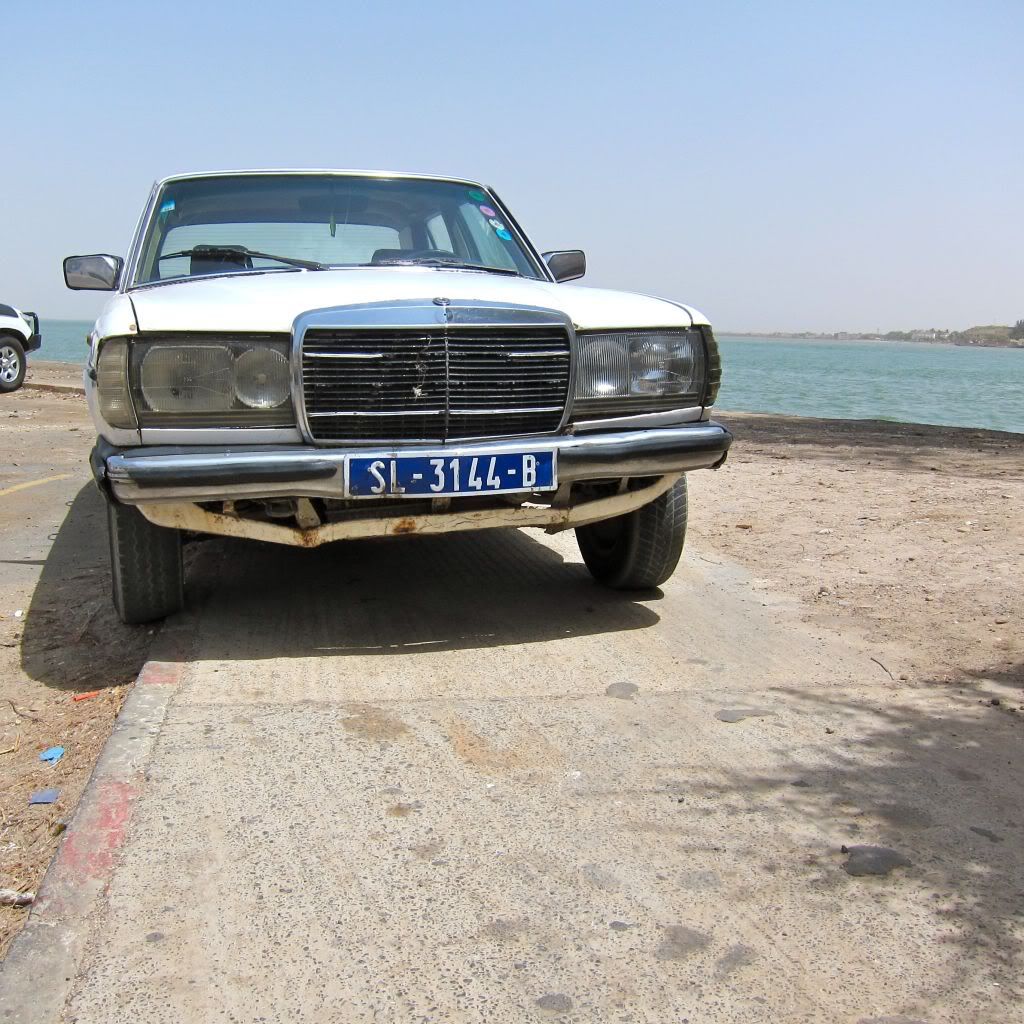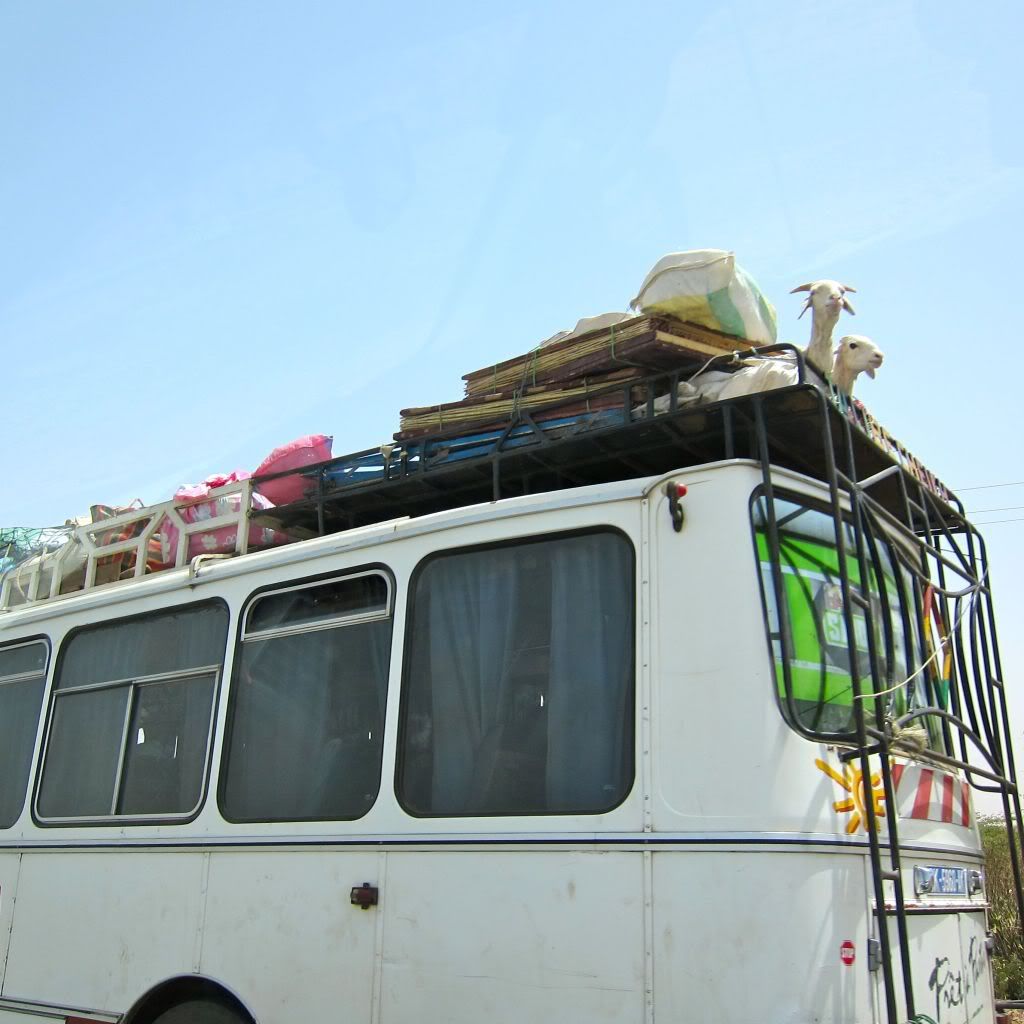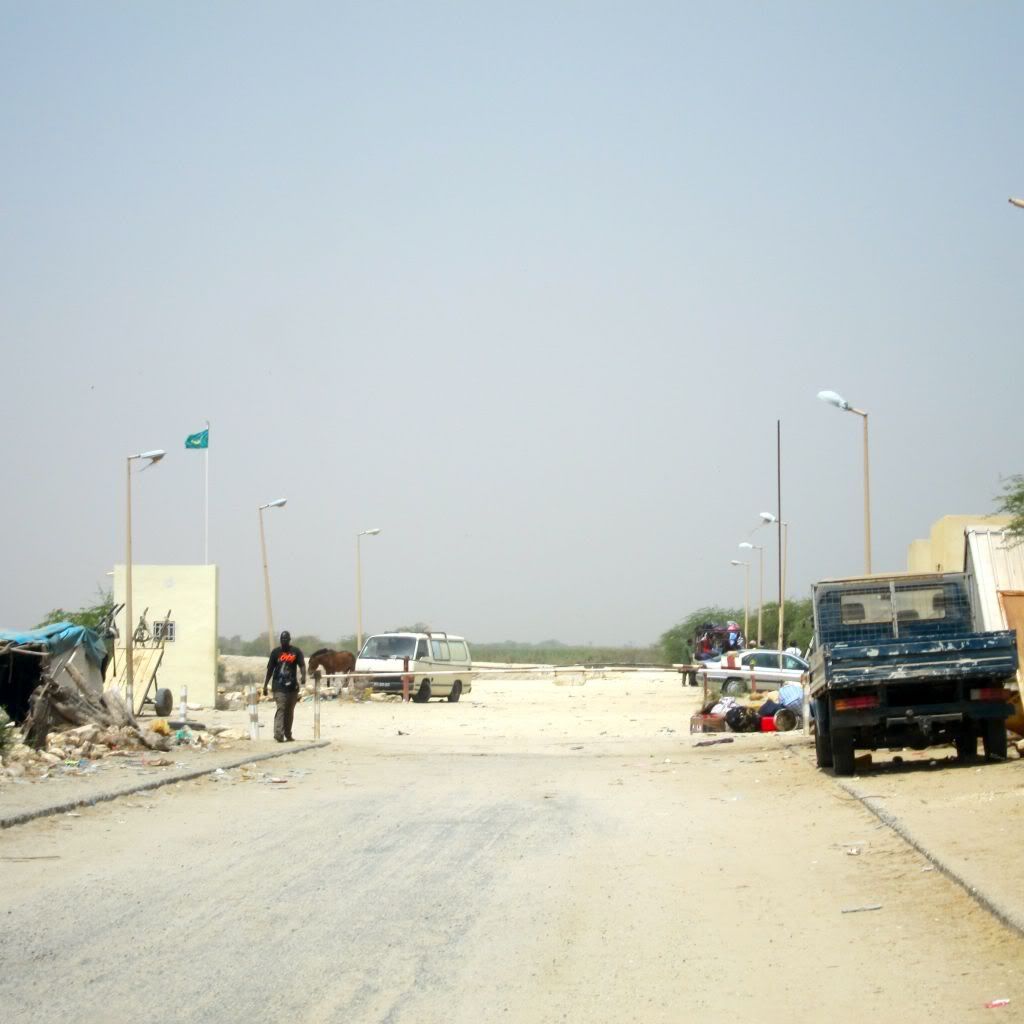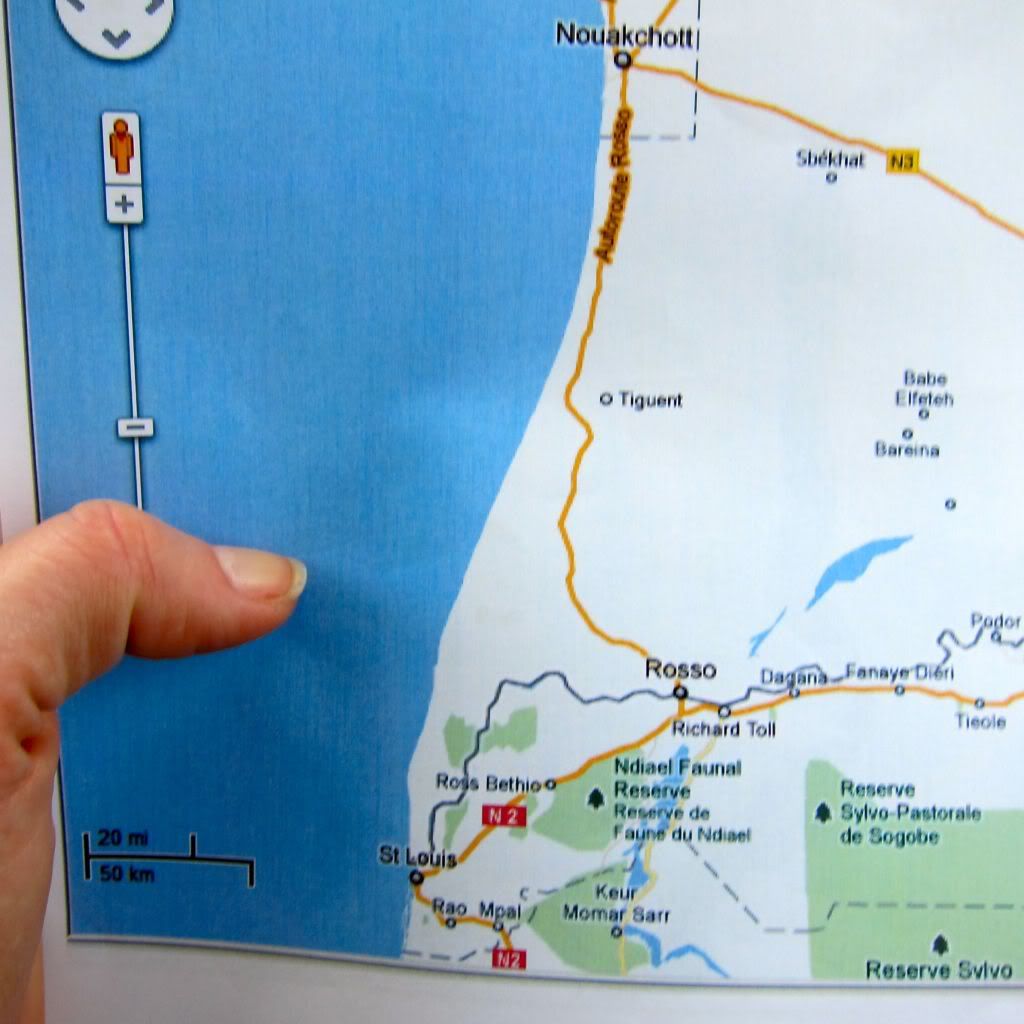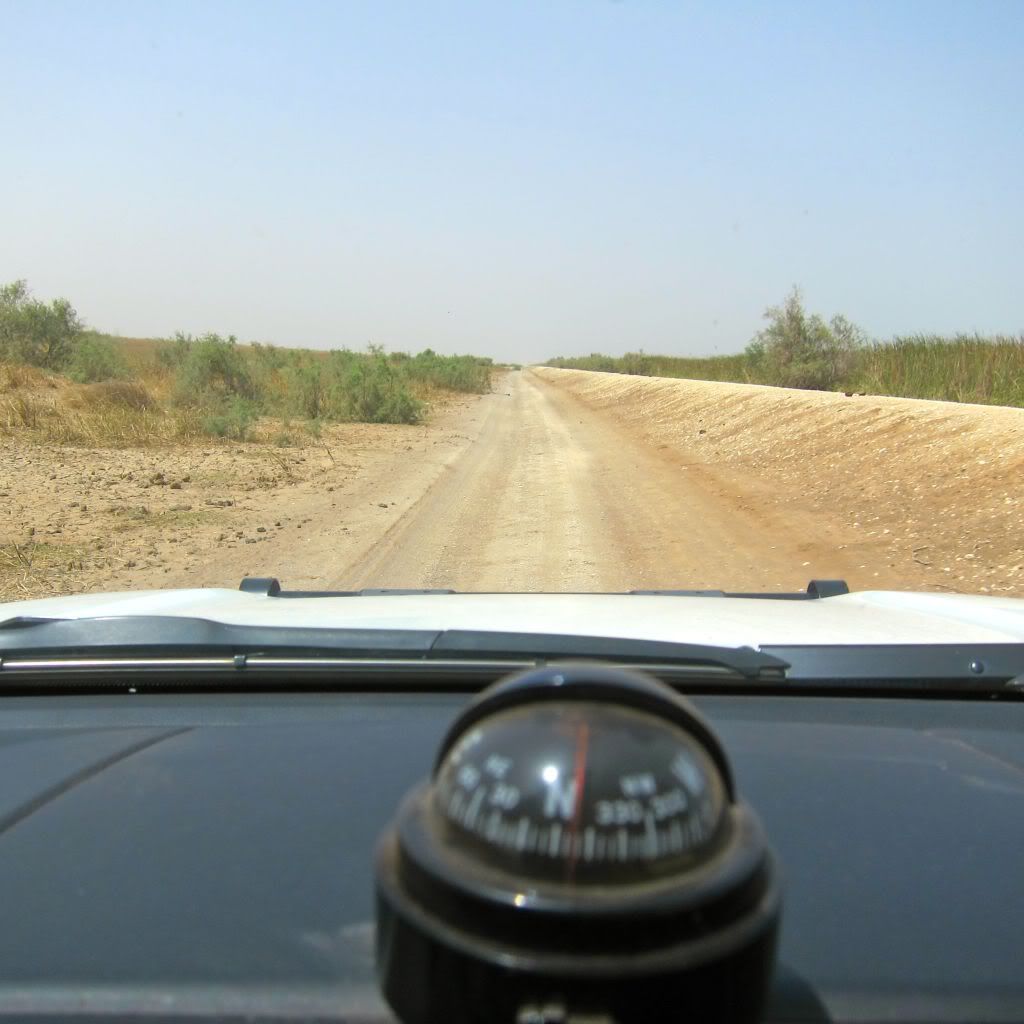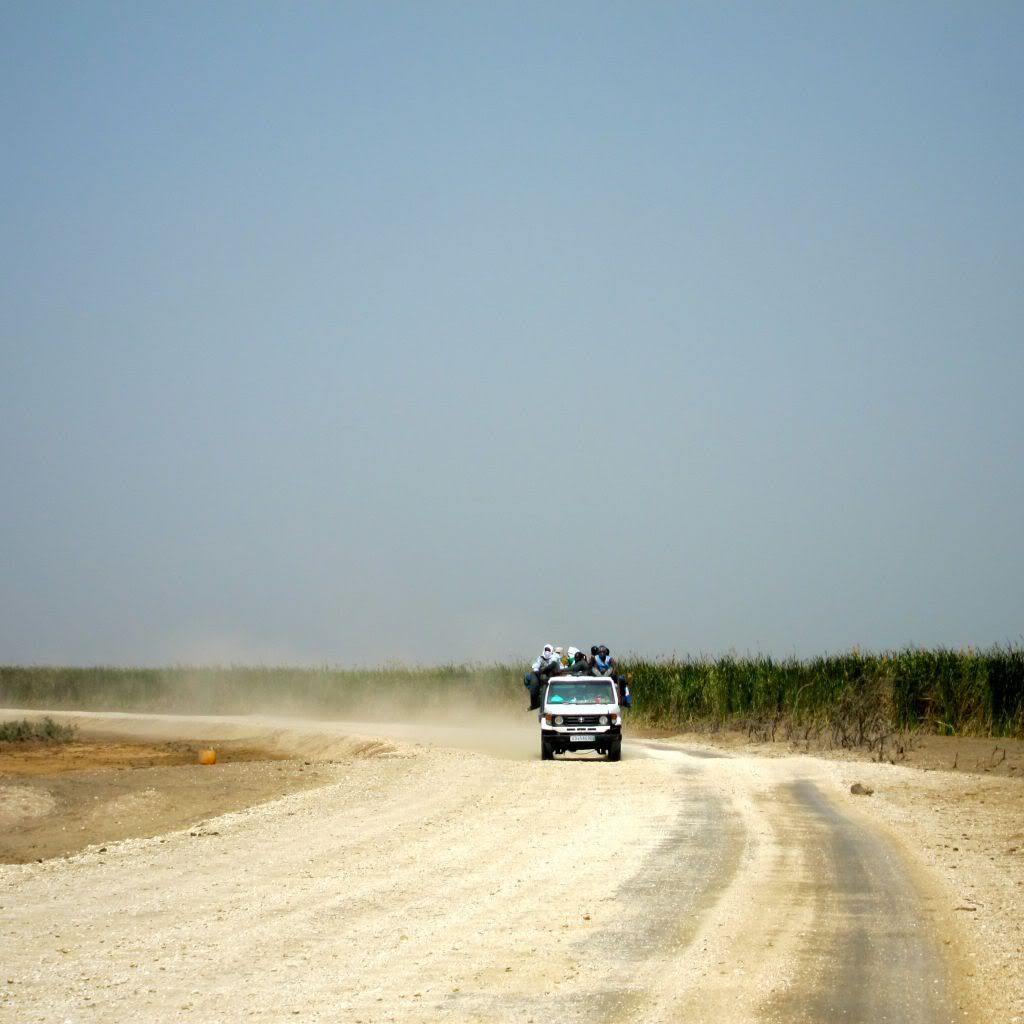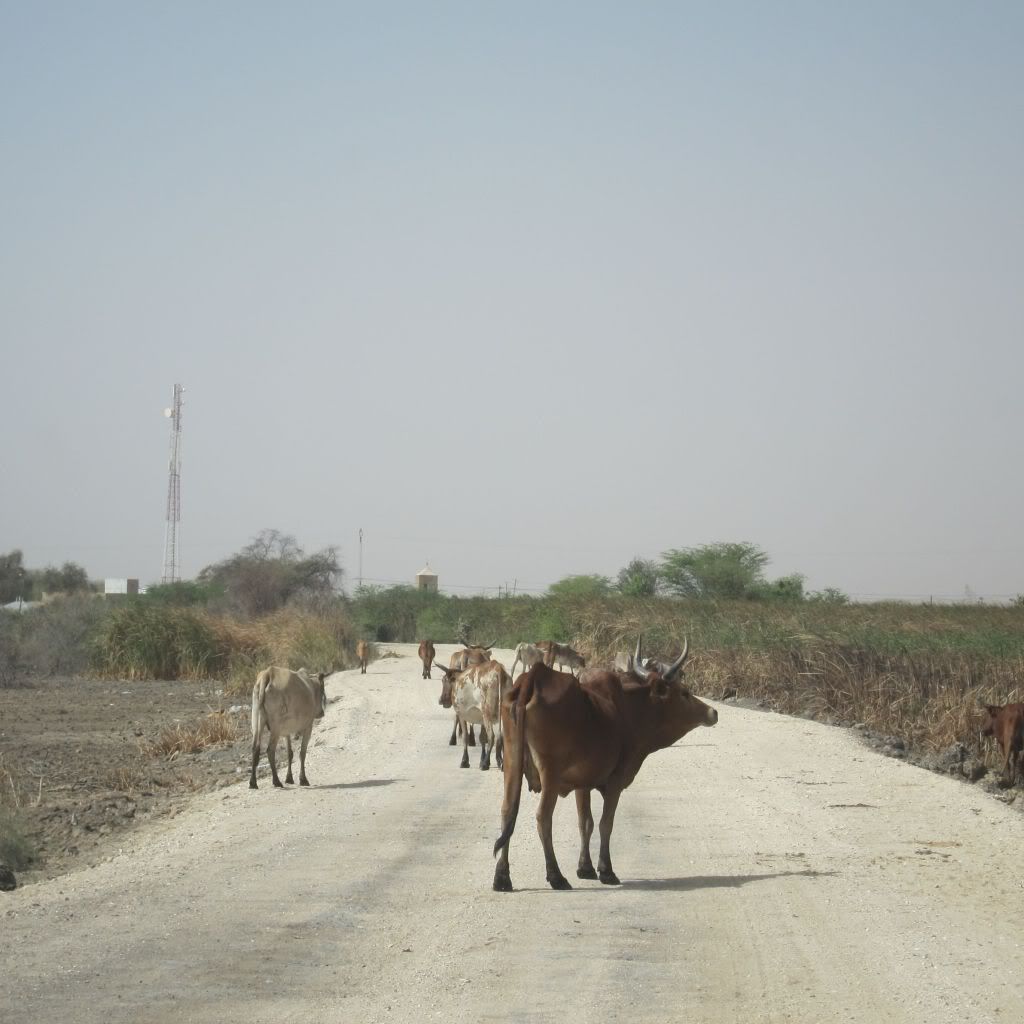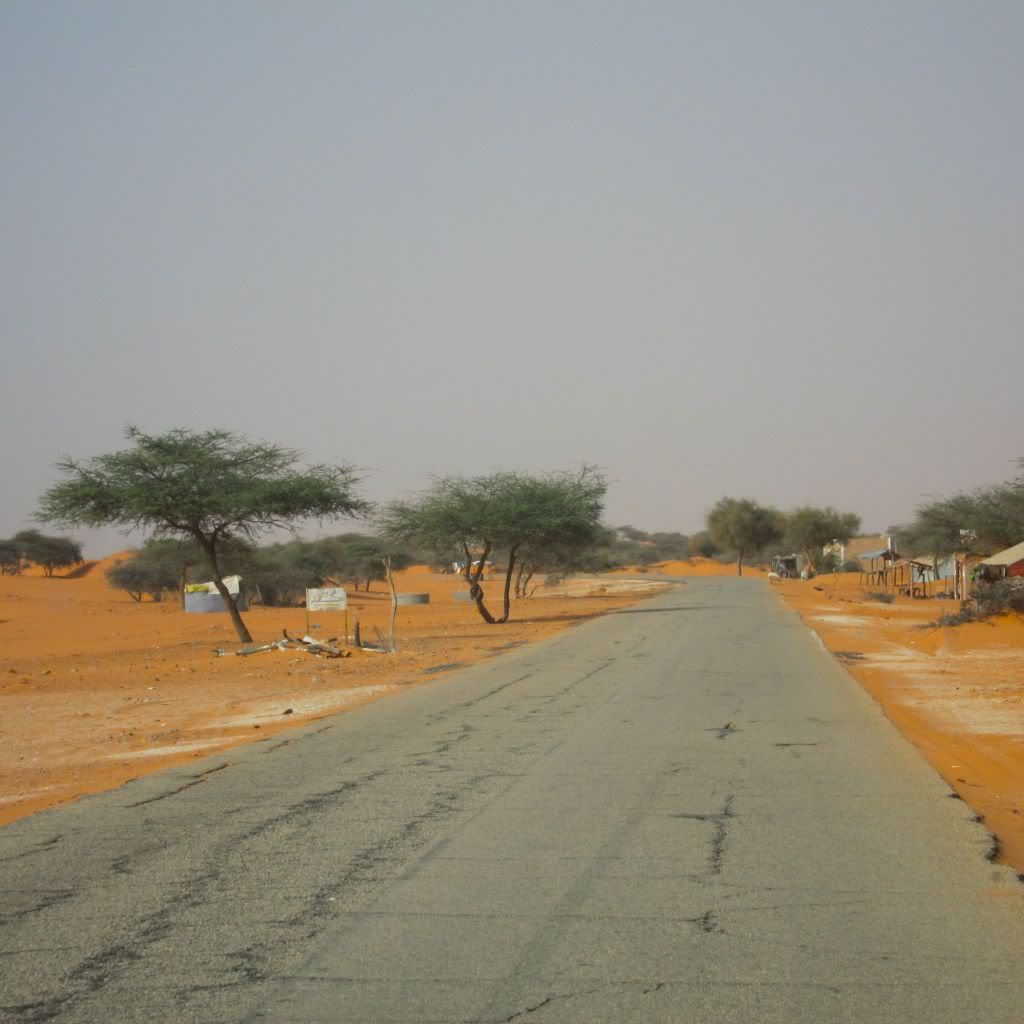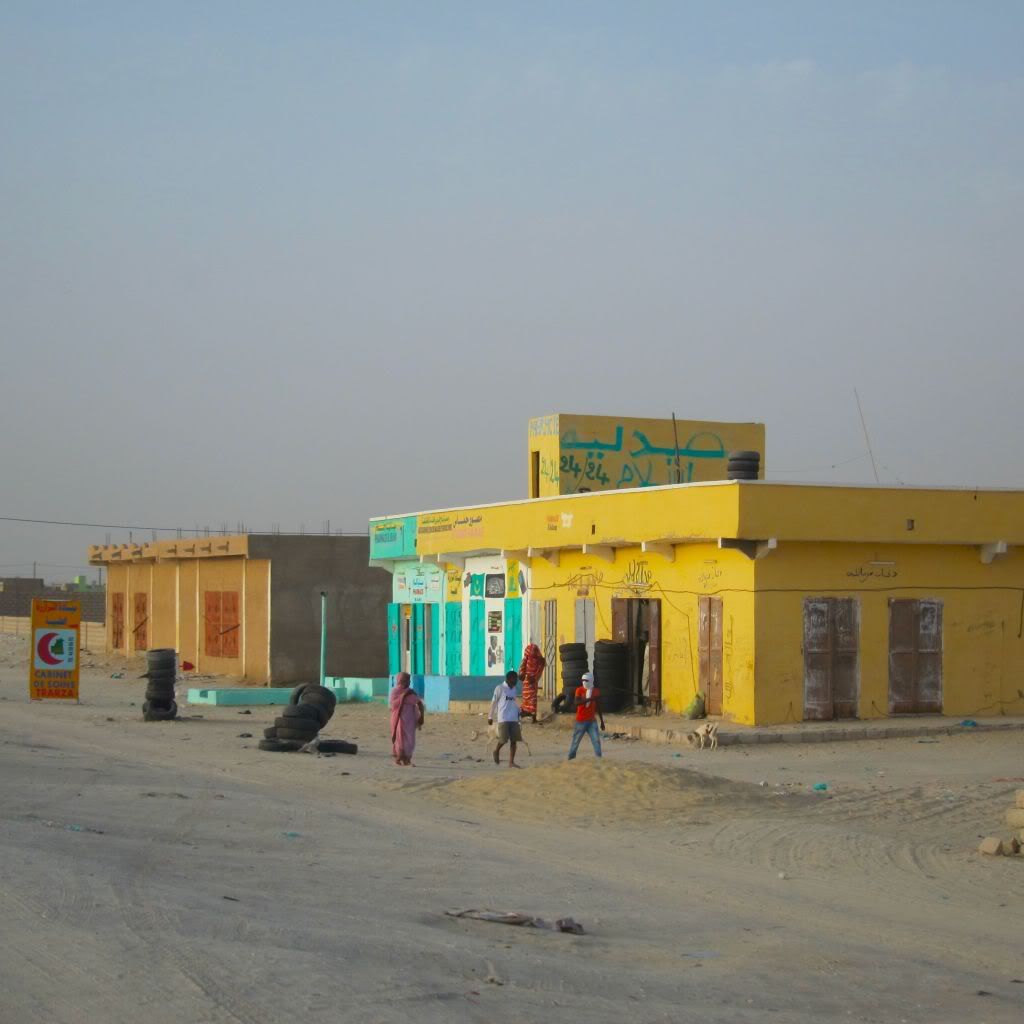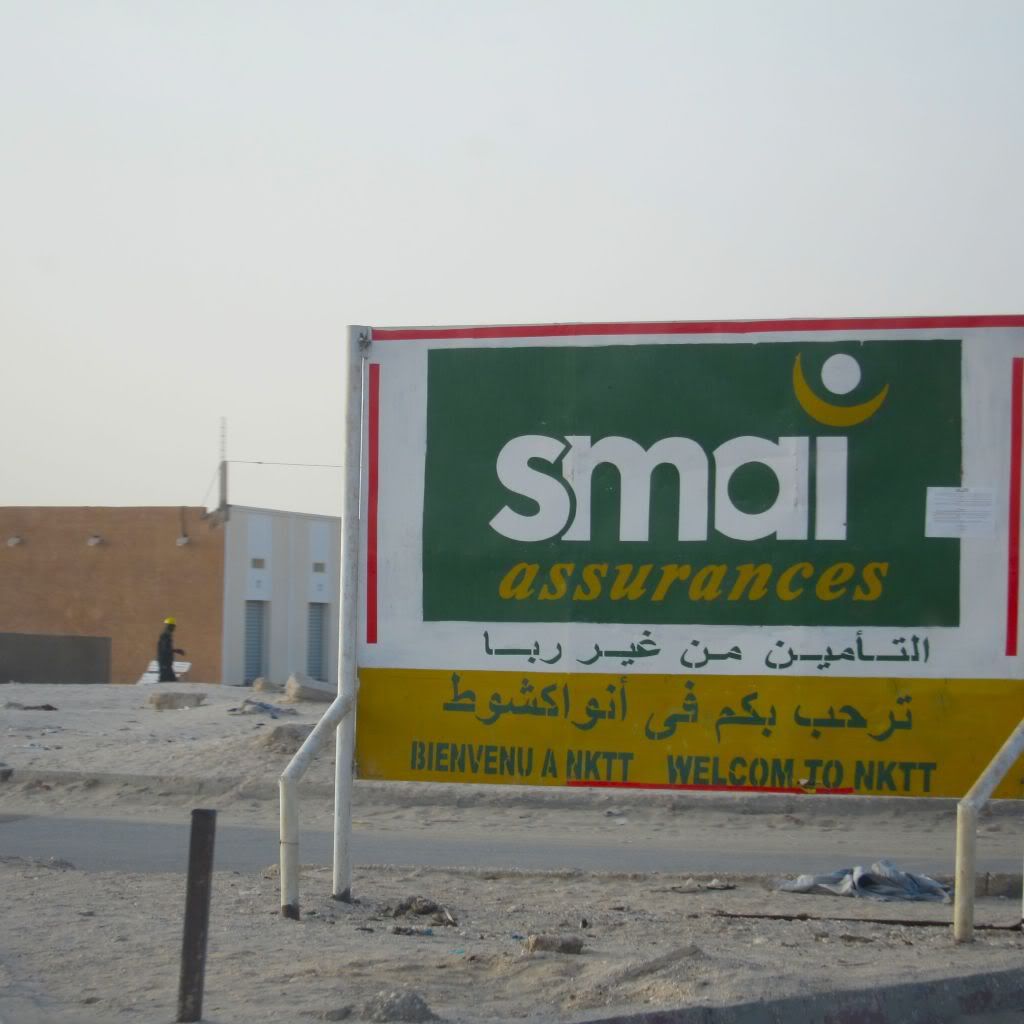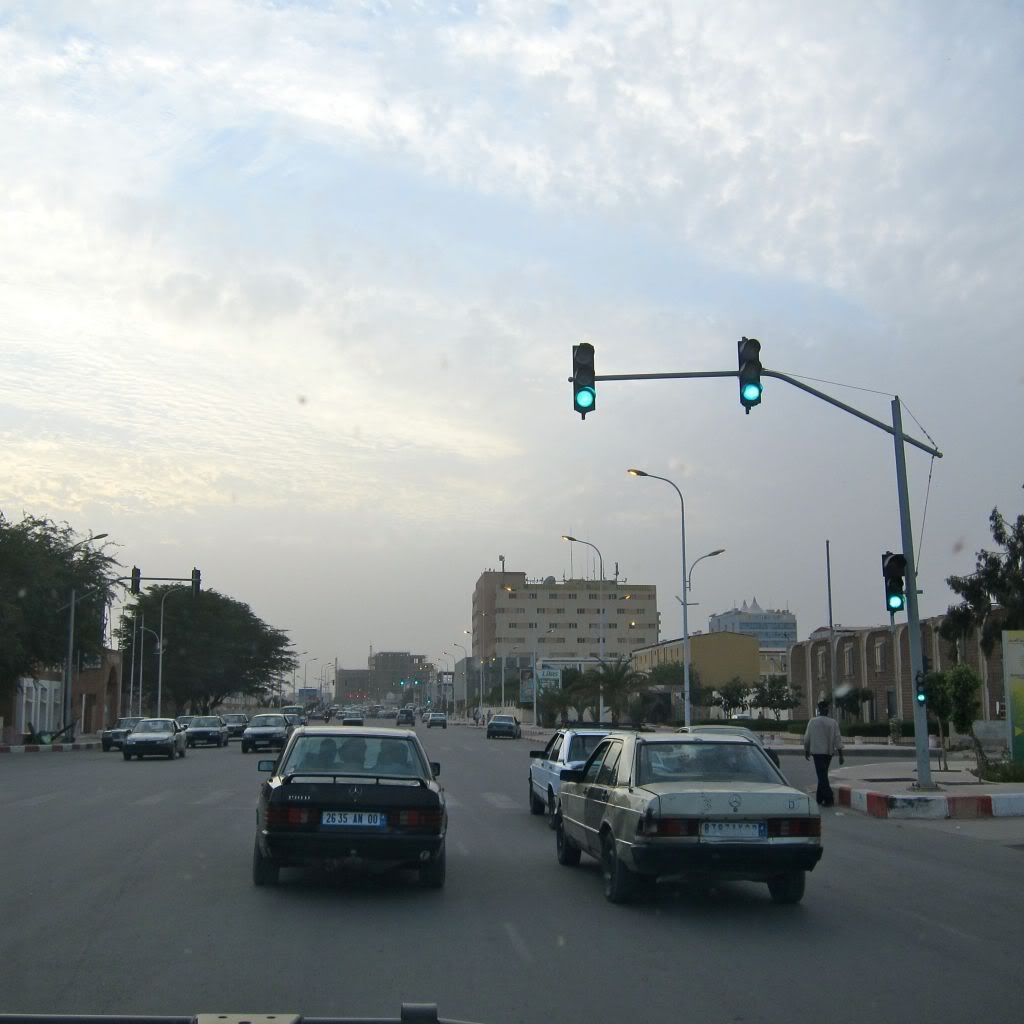Grab the best ball cap you can buy off these streets, cuz it’s time for a road trip!
Lucky me, I’m actually getting to do some more bona fide regional travel during this tour of duty! Unlike a lot of other Olmsted Scholars, I argue that accomplishing this is a bit harder (and way more costly) for me to attempt- so I don’t do it too often. I get annoyed every time I read this line in international news reports on Senegal, but it’s true: ” Senegal is the only country in west Africa never to have had a military coup.” Now all of Senegal’s surrounding countries may not be in a state of perpetual chaos, but some just aren’t the most relaxing of destinations when viewed through the eyes of a white woman traveling solo. At least not in the eyes of this particular one.
So we’re sur la route and headed north. The environs of Dakar are strewn with car wrecks that to a normal country would foster a lot of rubber necking. Here, people just roll on by and hope that their car isn’t going to be the next casualty. Hint: your odds of survival increase exponentially if your car isn’t ridiculously overladen with crap.
Where am I going? I should actually stop here and take a straw poll to see if any of you fantastic people can name the country situated just to the north of Senegal (and Valeria, you don’t get to answer this one). Here’s a hint- the country is three times the size of Arizona (so it’s not like I’m headed to Lesotho), and it was a former French colony. The currency is the Ouguiya.
The answer, of course, is Mauritania.
The city located just below the Mauritanian border is Saint Louis, city of teranga. Saint Louis is the former capital of French West Africa. In Wolof, Saint Louis is called Ndar- which means “north.” It’s a very fine town indeed.
The pace of life is Saint Louis is slower, and arguably much more pleasant than the flow of life in Dakar. The proximity between Dakar and Nouakchott make this place a perfect mid-trip stopping point.
Behold the iconic symbol of Saint Louis, the recently replaced Faidherbe bridge.
We traverse the bridge in order to make a stop on the scenic island.
Here behind this fantastic car rapide you can catch a glimpse of some of the colonial building structures left behind by the French. While the vestiges of pre-Independence Saint Louis are now in a dilapidated state, you can still get a sense for how things must have looked fifty years ago. I have no idea when car rapides started rolling around.
Probably my favorite boulangerie pastry of all time is a pain au chocolate aux amandes. This here boulangerie is fantastic anyway, but I really love their version of this item. We stopped in for some food and WC consultation before continuing on to the border.
[Aside: If you are a girl, you know what makes a bathroom fabulous? If you’re supremely lucky it includes all of these components: toilet, toilet paper, toilet seat, soap and running water. Aux Delices Du Fleuve gets four out of five stars in this regard, which is pretty awesome.]
After eating omelettes and espressos we head back to the car. We are parked next to this Mercedes, which is still in pretty good shape after all these years. Fun fact: the SL on the license stands for Saint Louis.
Did you know that Saint Louis is a UNESCO World Heritage site? Apparently neither does this guy. One thing I will not miss about Senegal is the number of men I see urinating in plain sight on a daily basis. They don’t care about my fancy bathroom rating scale at all.
Okay, so we’re back on the road. We pass more buses with varying interpretations of luggage seated in the overhead compartment.
Soon enough we arrive at the border and hop out to get our passport stamped. On the Senegal side, the border agent mildly chastises us for coming through at the lunch hour- and we did indeed feel bad as we eye a big bowl of ceeb just waiting to be consumed. He followed his terse comment by stamping us out of the country and inviting us to stay for lunch. We politely decline and instead carry on to the Mauritanian border. Here we were greeted by a guy who walked up and said (in French): “Hey Toubabs! Drive over this way!” No invitation to lunch by this dude, only some rambling commentary on how their president is better than Obama- and how crime isn’t a problem here because if you steel something, you hand gets chopped off. Fortunately the Mauritanian official actually responsible for stamping us into the country was far approachable, and he warmly welcomed us in to his country.
There’s not much out here on the other side of the border. Mauritania is a whole lot of Saharan desert, with a little bit of Sahelian and Senegal River zones located closer to us in the south. All the same, this map proved to be largely useless once we had departed Saint Louis.
Our instructions for getting to Nouakchott? Drive north.That’s it.
The southern end of our journey was located in a protected reserve. We saw some wild boars, lots of camels and a bunch of cattle wandering around.
Immediately we could see that Mauritania is decidedly less colorful than Senegal. Of course this is largely due to the shift in topography- and while people still rode atop of all forms of polluting transportation, now they were sure to have their heads wrapped up tight in turbans. Now I know where Dakar gets all of its dust.
And let’s discuss the quality of this road. Actually, why don’t you experience some of it for yourself? Hold on to your stomach…
We’re not rattling long before our fearless driver opts to drive down beside the shell and dirt paved road. Although these little side valleys yield the odd and unmoving pair of livestock, we found this approach to be much kinder on the human skeleton.
After awhile I started to think that these roads really weren’t constructed for motor vehicles- they exists for the more obvious occupants of Mauritania.
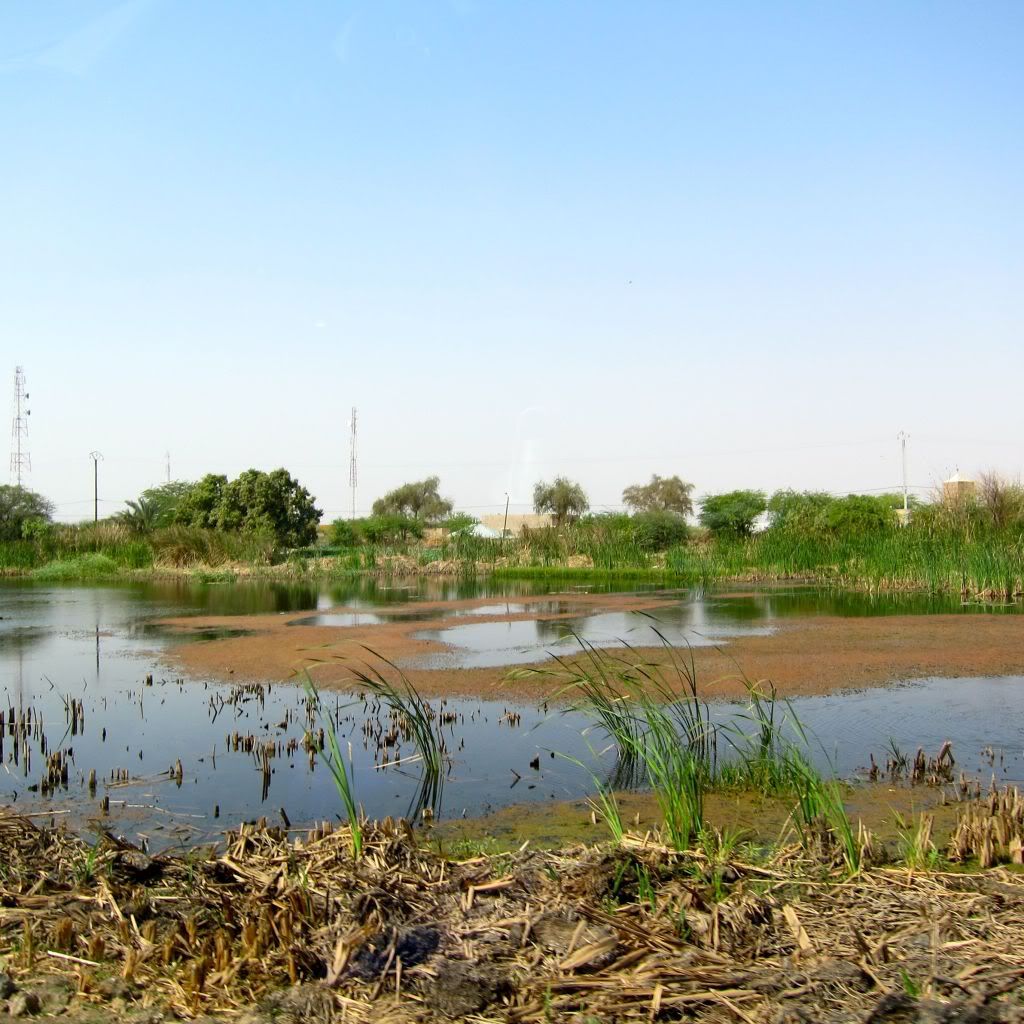
This country is not exactly one big dust bowl- and at the start of our transit we passed a handful of these fishing villages. There are a number of rivers and fishing co-ops located down in the southern region.
And just when you start to imagine that much of Mauritania must have oases of green, you suddenly and permanently cross over into a decidedly Saharan terrain.
I forget how long it took us to link up with one of the few paved roads outside of Nouakchott, but everyone in the car gave a collective cheer when we got to this point. Sure we had fun rolling through the sandy dunes, but we were also looking forward to seeing civilization again.
And as far as civilization outside of this country’s capital, this is what you have for villages. Simple (but often brightly painted) buildings with a mosque to anchor each community. The bright pinks, greens and lavenders served as a nice contrast to an otherwise sandy landscape.
In all sincerity I will say that this drive offers a unique kind of beauty. I will also follow up that proclamation by saying that the landscape resembled a combination of the movie backdrops of Fargo, Mad Max and that sandy planet in Star Wars. I know, I know- I’m just oozing poetic observation.
As the sun started to drop in the sky, we at last came upon buildings of a more robust construction. We didn’t need our fancy map, this had to be Nouakchott for sure.
And lest we kept driving till we hit Western Sahara (or Morocco, whatever you want to call it), we found some actual signage. How thoughtful! This is the first sign that we saw in Mauritania- some 200 kilometers of road adventure sans commentary.
And check it out- Nouakchott has a couple of working lights as well! While Mauritania may not have as wide an array of colors on its environmental palette, I’ll betcha they’ve been enjoying these fancy working streetlights for longer than Dakar.

